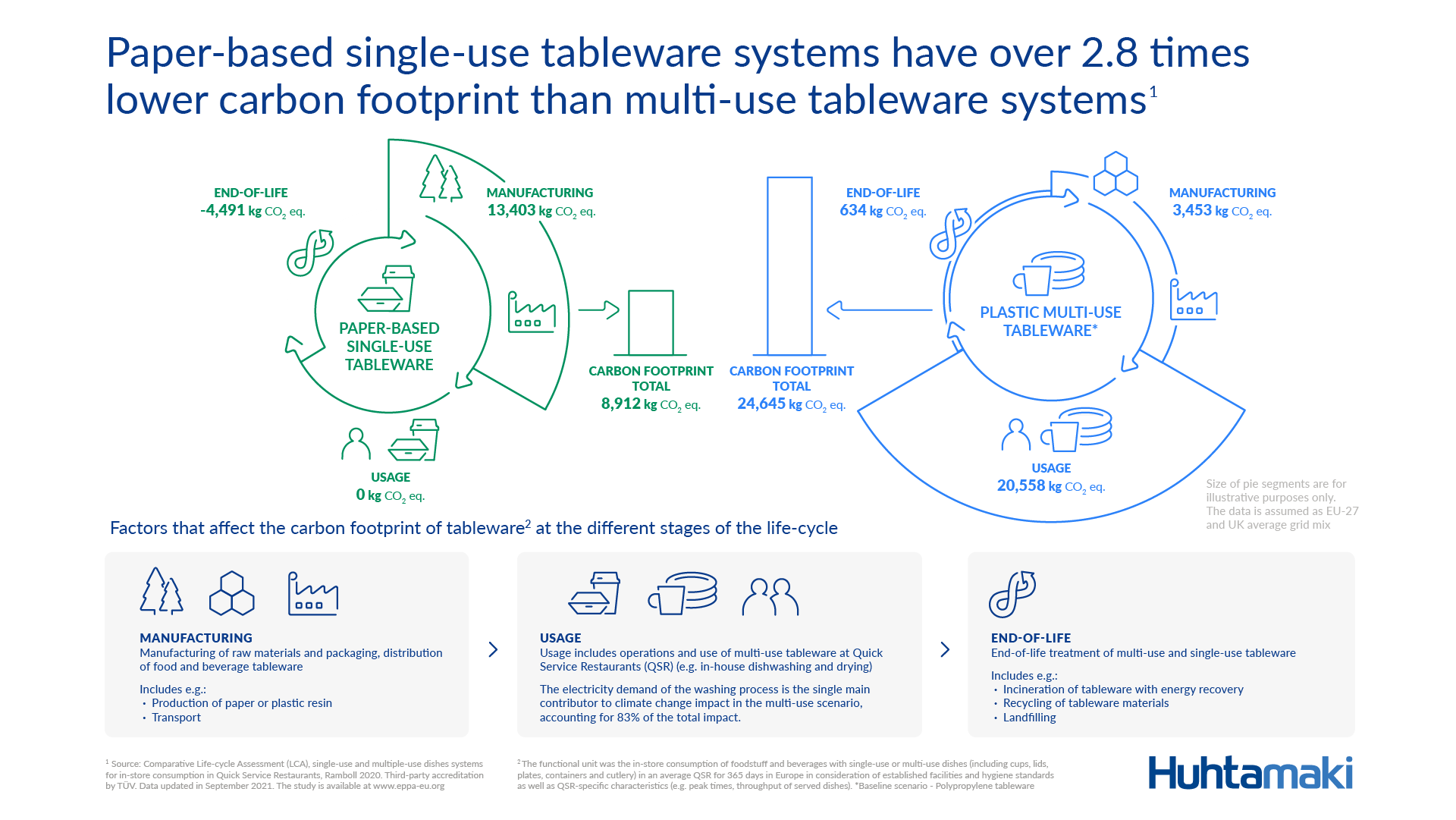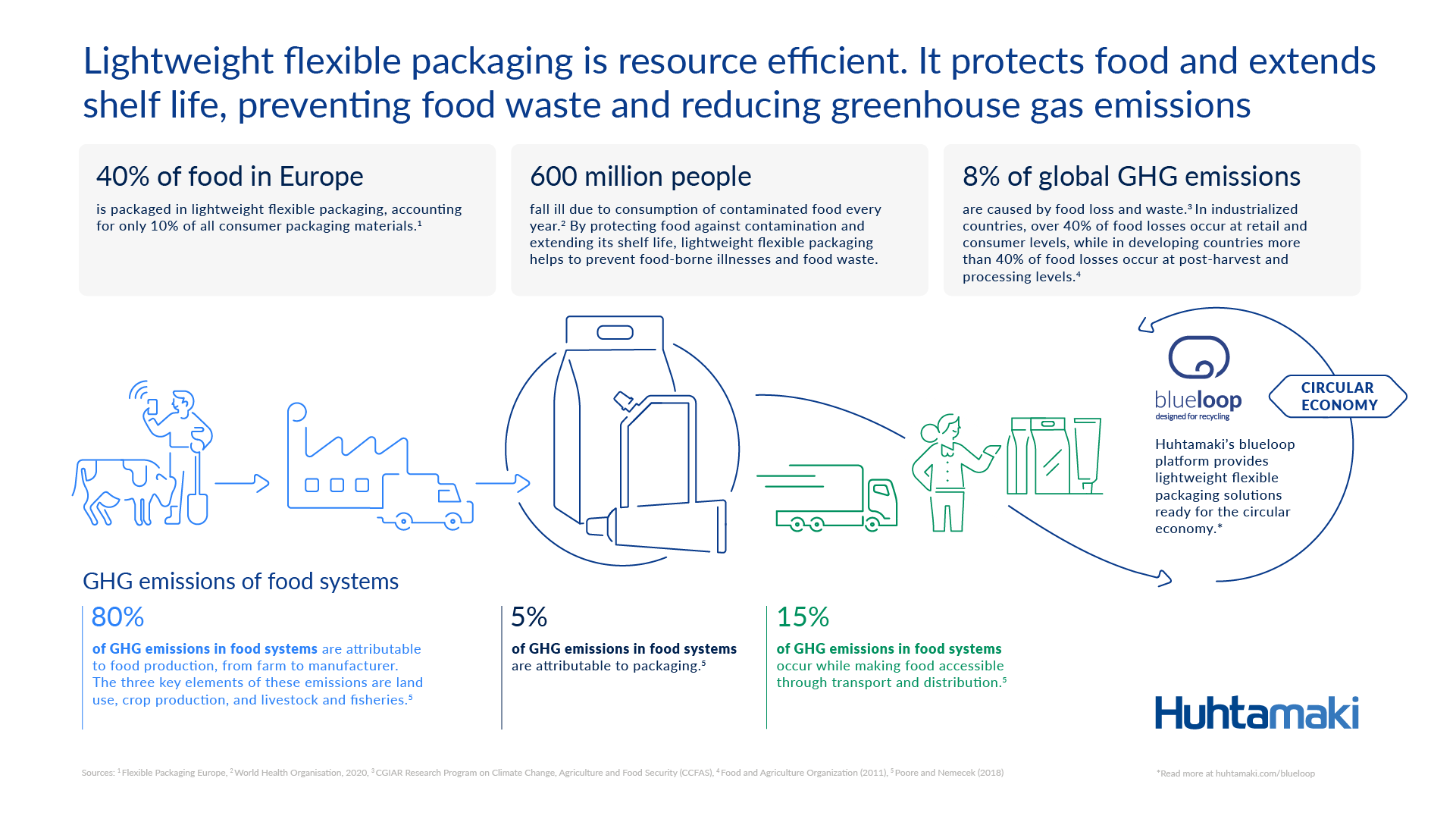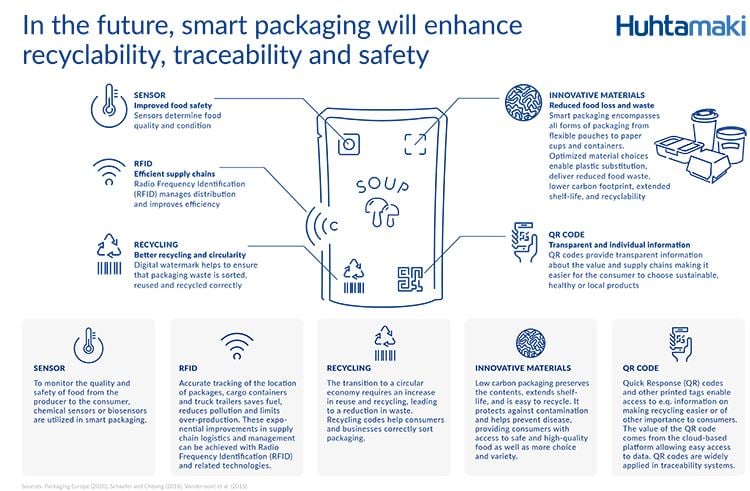We believe that food packaging is essential. By ensuring hygiene and the safety of food, packaging keeps food edible for longer and plays an instrumental role in driving access to affordable food for all, wherever they are in the world.
We should therefore make positive choices in the selection of materials to ensure fit-for-purpose packaging. For us, being material positive supports how we play our part in contributing to both circular and low-carbon systems.
The impact of the food system poses one of the greatest challenges to achieving sustainability. Almost 30 percent of food produced is lost or wasted – contributing to approximately 10 percent of total greenhouse gas (GHG) emissions globally. This outcome ripples across ecosystems and populations, directly affecting living standards and quality of life.
Packaging plays a critical role in limiting the carbon impact of our food system. As well as improving its circularity and enabling the movement of food - from where it is produced to where is consumed – packaging supports portion control, facilitates affordability, and provides numerous social and economic benefits along the way.
It is for this reason we believe that packaging forms an integral part of our food systems.
It is why we believe that the value of packaging for the environment is much higher than its impact.
Here’s how packaging benefits food, people, and the planet:



